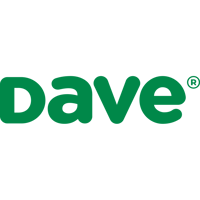
Dave Inc. reports a ROIC of -24.93% and a WACC of 20.38%, resulting in a negative ROIC to WACC ratio, indicating inefficiencies in capital utilization.
Nathan’s Famous, Inc. (NATH) and Society Pass Incorporated (SOPA) showcase strong capital efficiency with positive ROIC to WACC ratios, highlighting effective use of capital.
Forge Global Holdings, Inc. (FRGE) and Ark Restaurants Corp. (ARKR) also exhibit negative ROIC to WACC ratios, similar to Dave Inc., suggesting areas for improvement in capital management.
Dave Inc. (NASDAQ:DAVE) is a financial technology company that offers banking services and financial tools to help users manage their finances. The company aims to provide accessible financial solutions, but its current financial metrics suggest challenges in capital efficiency. A key metric to assess this is the comparison between Return on Invested Capital (ROIC) and Weighted Average Cost of Capital (WACC).
Dave Inc. reports a ROIC of -24.93% and a WACC of 20.38%, resulting in a ROIC to WACC ratio of -1.22. This negative ratio indicates that Dave is not generating enough returns to cover its cost of capital, leading to value destruction. This is a critical issue for the company as it suggests inefficiencies in using its capital to generate profits.
In contrast, Nathan’s Famous, Inc. (NATH) showcases a strong ROIC of 68.04% against a WACC of 5.65%, resulting in a ROIC to WACC ratio of 12.04. This positive ratio indicates that Nathan’s is effectively using its capital to generate returns well above its cost, highlighting its capital efficiency.
Society Pass Incorporated (SOPA) stands out with an impressive ROIC of 635.98% and a WACC of 12.32%, leading to a ROIC to WACC ratio of 51.61. This substantial positive spread suggests that SOPA is creating significant value, efficiently utilizing its capital to generate high returns compared to its cost.
On the other hand, Forge Global Holdings, Inc. (FRGE) and Ark Restaurants Corp. (ARKR) also face challenges similar to Dave, with negative ROIC to WACC ratios of -2.38 and -1.17, respectively. These figures indicate that these companies, like Dave, are not covering their cost of capital, pointing to potential areas for improvement in capital management.

